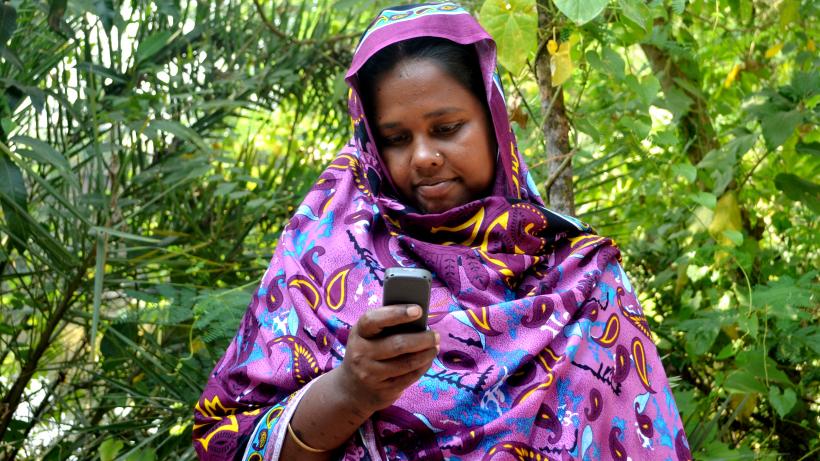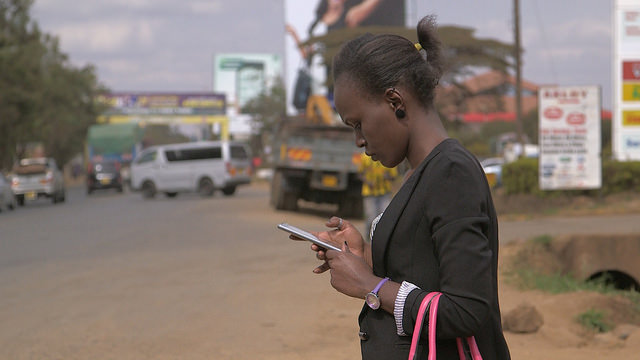
Mobile money: Leaving no one behind in the digital age
Kenya and Tanzania provide evidence on how technology holds promise for an inclusive, empowered and poverty-free future. Government support and improved financial literacy are found to be key drivers of financial inclusion in the developing world.
Mobile money, one of the most popular innovations for development, is considered by many as a promising tool to open the door to inclusive growth, but its impact hasn’t yet fully reached many vulnerable and marginalised communities in developing countries. Comparing it to Silicon Valley inventions, London School of Economics (LSE) Professor, Saul Estrin noted that mobile money has the potential to be an “Uber phenomenon”, but the lack of well-defined structures in developing countries prevents a truly revolutionary transformation of existing financial and telecom industries.
The Mobile Money Conference
Are we on the right track to help alleviate poverty and empower women through innovative financial services? Who are the real beneficiaries of mobile transfers and how can they learn to maximise the use of digital technologies? And what is the role of digital identity and financial literacy in a fast-moving world?
These and many other important questions were addressed during the one-day Mobile Money Conference, on 13 October, 2017, co-hosted by LSE Management and the International Growth Centre (IGC). The conference convened leading academics, policymakers, and business practitioners to discuss the key issues raised by mobile money and focus on very specific country experiences.
Promoting financial inclusion in the developing world
In the past few years, financial inclusion has become the focus of the international community, and consolidated efforts have been driven by the belief that access to financial services could unleash huge potential for development. Undoubtedly, the rise of digital financial technology has created numerous opportunities for bridging the gap between financial services and the poor, but the complexity and diversity of challenges faced by developing countries makes it difficult for a universal and easily transferrable formula to be elaborated.
Although policies and practices vary considerably, it is interesting to reflect on what approaches are successful in different parts of the world and extract key lessons from innovations, such as digitising government-to-person payments in countries like Brazil, Mexico, and Turkey, or building digital infrastructure and creating national digital identifications in India.
Kenya’s M-Pesa: The gold standard in mobile money
Reflecting on the constructed narrative of financial inclusion as a silver bullet that could reduce poverty, help people save money, and invest more in education, William Jack, Associate Professor of Economics at Georgetown University, argued that more research should be done to address some of these claims and answer whether all these expectations can be met in the near future.
Referring to the unprecedented success of M-Pesa in Kenya, a Safaricom mobile money transfer service, he highlighted that the large demand for sending money home, and the widely spread network of agents to handle transactions, were among the most crucial success factors. The findings of his recent study on the long-term effects of access to mobile money in Kenya, indicate that households that have access to mobile money are more able to protect themselves from shocks, primarily through remittances.
Access to mobile money and women’s empowerment
Access to M-Pesa does not influence much the distribution of consumption among male-headed households, but it does have an effect on female-headed households. Women in rural areas are particularly disadvantaged and access to mobile money could lift them out of poverty – results show that female-headed households, in an area with an increase in M-Pesa agents, were more likely to have higher financial savings and change occupations from farming to business and retail sales.
Kenya’s example sets an optimistic model, but access to mobile money in other developing countries could also have an impact on lifting women out of poverty, offering them financial security and independence in the future upon effective regulation of mobile money.
M-Pesa was the most quickly adopted technology in the history of the world – dishwashers were slower, coloured TV was slower, even the Internet was slower. – William Jack, Georgetown University.

Jackline's family send her money direct to her Mpesa mobile money wallet. This means she can pay her school fees, her rent, bills straight from her mobile phone. Picture credit: WorldRemit
Government’s role in financial inclusion: Tanzania
Although significant progress has been achieved, there are 2 billion people around the world who remain excluded from financial services, and most of them are women who only had access to low levels of formal education. In order to bridge this gap, the role of government in driving financial inclusion is pivotal, and mobile money has simplified very complex logistical processes of transferring money from the government to its citizens.
In countries such as Tanzania, where government cash transfers target 50% of the population, recipients have to physically queue up for days to get their money. Going digital would benefit both parties: it would dramatically reduce the cost of transaction for the government, and eliminate the need for recipients to queue up by sending their money straight into their digital wallet. In addition, recipients would be able to save money, and purchase microinsurance products in the future.
Technology take-up and financial literacy
These financial services are often unfamiliar to beneficiaries, who predominantly live in rural areas. Drawing on the successes and challenges of the first phase of including financially marginalised people in Tanzania, Dayo Forster, Africa Lead at Fundacion Capital, cautioned that a substantial number of beneficiaries still opt for cash and decide to self-exclude. Among the potential reasons that would justify their choice is that the process is not intuitive enough for a person who is not technology-savvy.
A solution to this impediment would be to redefine the role of financial education and simplify the learning process. Instead of focusing on incorporating too much information, financial literacy should be practical and product-oriented to bridge the gap between product marketing and effective product use (Cohen et al., 2008).
Cash transfer programmes are teachable moments that appeal to multiple groups of learners. One effective method of learning is by using and testing the product yourself. Simulation activities increase the confidence of the users in experimenting with new products and technologies without fearing the consequences of errors.
You can listen to the audio recordings of the four panels here.
References
Cohen, M., Hopkins, D. and Lee, J. (2008). Financial Education: A Bridge Between Branchless Banking Low‐Income Clients, Microfinance Opportunities, Washington, DC. Accessible: http://www.microfinancegateway.org/sites/default/files/mfg-en-paper-financial-education-a-bridge-between-branchless-banking-and-low-income-clients-aug-2008.pdf
Logan, S. (2017). Regulating mobile money to support scale-up, Synthesis paper, the International Growth Centre. Accessible: https://www.theigc.org/reader/regulating-mobile-money-support-scale/
Suri, T. and Jack, W. (2017). The Long-Term Effects of Access to Mobile Money in Kenya, Innovations for Poverty Action. Accessible: https://www.poverty-action.org/study/long-term-effects-access-mobile-money-kenya

